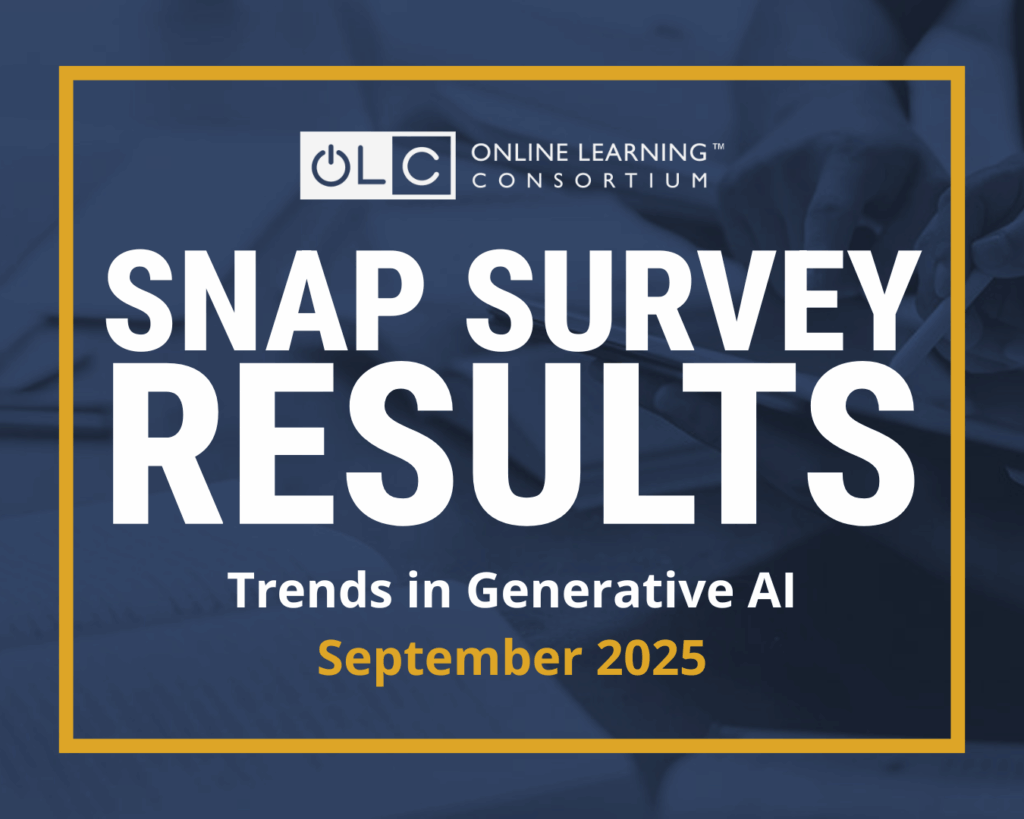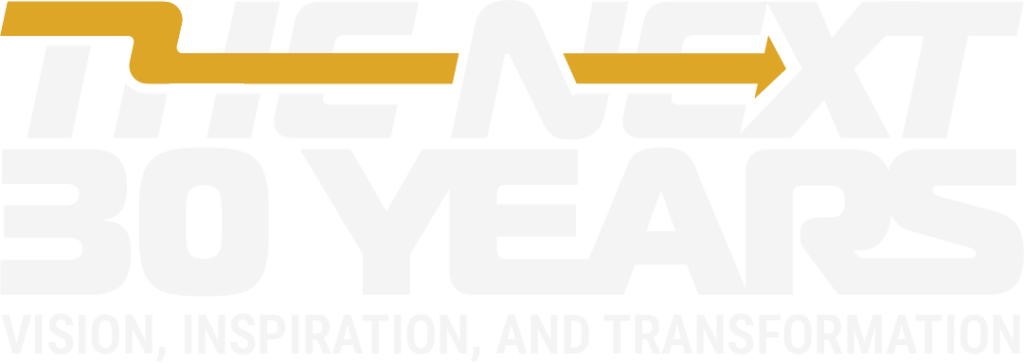Abstract:
This effective practice describes how students in a fully online accelerated graduate program are able to earn micro-credentials in the form of graduate certificates as part of a stackable master’s degree. The certificates focus on high-tech, high-need, competencies and skills employers across a wide array of fields, including information systems and technology, educational technology, business, and healthcare, are looking for. Integrating certificates into existing programs can afford students the opportunity to promote their professional mobility by developing specialized skills they can apply on the job right away. Micro-credentials in the form of graduate certificates have the added benefit of offering learners the flexibility of starting a formal academic program and earning a credential with or without committing to an entire degree.
This effective practice describes how faculty of a fully online Master of Education in Educational Technology developed a stackable master’s degree that enables students to earn micro-credentials in the form of one or more graduate certificates as part of the degree. The graduate certificates focus on high- tech, high-need, competencies and skills employers across a wide array of fields are looking for.
The M.Ed. is an accelerated, 30-hour, fully online, program. To earn the degree, students must complete the 21-hour core courses plus 9 hours of electives. With faculty advisor approval, students can customize their degree plans to meet their specific educational and professional goals. Through their electives and select coursework, students have the option of earning a graduate certificate in E-Learning or Technology Leadership, or by taking one additional course, both certificates. The two micro-credentials are presented as non-degree graduate certificates on students’ university transcripts.
The development of stackable master’s degrees is a win-win-win scenario for all concerned stakeholders. For the institution, stackable degrees enable universities to market innovative programs that offer students options. The micro-credentials can stand alone as university issued certificates or serve as feeders into other graduate programs. For the faculty, the emergence of stackable degrees in higher education provide rich opportunities for conducting research and help faculty to keep their programs fresh and current by enabling them to develop new certificates based on their interests and market demand. For students, stackable degrees enable them to customize their learning experiences to match their educational and professional goals. They also save students time and money, as the additional micro-credentials earned as part of their degrees, can cost many thousands of dollars if earned separately.
Although they have been around for several years, stackable credentials are just now starting to gain traction in credit-awarding institutions as a way to afford students the opportunity to develop specialized skills they can apply on the job right away, while earning a degree. Stackable credentials have the added benefit of offering learners the flexibility of starting a formal academic program and earning a credential with or without committing to an entire degree. For academic programs, they are a way to increase enrollment and create feeders into their graduate programs.
To capture students’ perceptions regarding the educational and professional value of graduate level “stackable” credentials in a fully online graduate program, a survey went out to all students enrolled during the Spring 2019 semester. The survey consisted of nine questions and addressed the following dimensions: (1) Learning Effectiveness, (2) Scale, (3) Access, (4) Student Satisfaction, (5) Skills Development, (6) Leadership Potential, and (7) Career Potential. A final, open-ended question was asked to enable students to express their thoughts about the value of earning the graduate certificates as part of a stackable master’s program. Of the 54 students enrolled in the M.Ed. program during the Spring 2019 semester, 37 (68.5%) students participated.
Learning Effectiveness
The first pillar, Learning Effectiveness, challenges instructors to take advantage of the unique characteristics of online environments to ensure that students receive a high-quality learning experience. This effective practice specifically targets the course [and program] design, learning resources, pedagogy, assessment, and learning outcomes categories for enhancing student satisfaction, retention, achievement, and performance. To ensure that students receive a high quality learning experience, the implementation of the stackable master’s degree and its corresponding micro-credentials required significant planning and attention to course and program design and a reassessment of the assessments and learning outcomes, in order to fit the various essential puzzle pieces into a seamless program. The result is a highly customizable, flexible, and convenient program that is responsive to learners’ needs. Combine these features with the unique characteristics of online education and you have a program that can be completed anytime, anywhere by working professionals and adults with family responsibilities. As one student commented in the open-ended question of the survey:
“I think the model for a “stackable” master’s degree is fantastic. Until now, I never had a say in how I could customize my learning experiences to match my educational needs. My undergrad work was filled with courses that didn’t apply to my career choice. Working to earn these certificates as part of the master’s degree provided me with additional real-world work experience that prepared me to enter the EdTech profession future-ready with the added confidence that I know what I am doing.”
To assess learning effectiveness and the overall satisfaction of students for this effective practice, a survey was conducted during the Spring 2019 semester. Of the 54 students enrolled in the program that semester, 37 participated in the survey. When students were asked to assess the effectiveness of the certificates in producing learning outcomes which were consistent with their needs, 35 of the 37 students (94.6%) strongly agreed or agreed that the learning outcomes from the certificates aligned with their needs (See Table 2). Also, as illustrated in Table 5, of the 37 respondents, 31 (83.8%) strongly agreed and 4 (10.8%) agreed that they were satisfied with the learning they experienced through the graduate certificate courses. These outcomes suggest that the effective practice positively enhances student satisfaction and may be a contributing factor in improved student retention, achievement, and performance.
Scale
The second pillar, Scale, challenges programs to provide the best educational value to learners and to achieve capacity enrollment. In terms of educational value, stackable degrees enable students to customize their learning experiences to match their educational and professional goals. Stackable degrees can also save students time and money as the additional credentials they can earn as part of their degree can cost many thousands of dollars if earned separately. For example, the total cost of the 12-hour E-Learning Certificate is $5,500. Similarly, the cost of the 9-hour Technology Leadership Certificate is $4,125. Students earning both certificates would pay $9,625. But, if the certificates are earned as part of the degree, these costs are absorbed into the total cost of degree. At $13,750, this program is already one of the most affordable master’s degrees in Educational Technology the country.
To assess the educational value of this effective practice for learners, students were asked to rate their level agreement with the following statement: The graduate certificate(s) offer educational value to learners. As illustrated in Table 2 (See full report in Supporting Documentation), of the 37 students who responded to the survey, 35 (94.6%) strongly agreed or agreed that the graduate certificate(s) they were earning as part of the master’s degree offered an educational value to them.
As recent graduate, Christopher Niemann, Technology Lead for Training Development at NASA’s Johnson Space Center said in his letter of support:
“The packaging of the E-Learning Certificate, as a credential that could be gained within the required M.Ed. program, was an economic way to gain a documented competency in E-learning. Pursuing that certificate independently typically might have cost me up to five thousand dollars. However, within the M.Ed. program, the certificate fulfilled a role that would otherwise have needed to be filled by electives. So, I got a focused and useful certification, but at effectively no added cost, as it was subsumed under the normal “cost of business” for the master’s program.”
In terms of scalability, stackable degrees provide universities a cost-effective way to achieve capacity, increase enrollment, and develop brand recognition by marketing innovative programs that offer students options. The micro-credentials can be marketed as stand-alone university-issued certificates or serve as feeders into other graduate programs. As one student commented in the open-ended question of the survey:
“As I was researching programs that could serve my educational and professional needs, I initially came across the two graduate certifications. Because they were relatively short programs, I was immediately drawn to them. But as I researched further, I realized that by taking a few more courses, I could earn a master’s degree as well. Great ROI!”
If marketed effectively, stackable degrees offer universities the opportunity to leverage key educational resources while offering new online learning opportunities to students. Furthermore, as stackable degrees can use or recycle existing graduate programs and certifications, they are cost effective and can make tuition more affordable for students, thus providing a higher return on investment for the institution and students.
Access
The third pillar, Access, provides the means for all qualified, motivated students to complete courses, degrees, or programs in their disciplines of choice. Access also enables prospective learners to become aware of available opportunities.
To assess their levels of access to program options within the stackable master’s degree, in the Spring 2019 survey, students were asked to rate their level of agreement with the following
statement: The graduate certificate(s) improve access to education by expanding opportunities and/or reducing barriers. As illustrated in Table 4 (See full report in Supporting Documentation), 35 out of 37 students (94.6%) strongly agreed or agreed that the graduate certificate(s) they were earning as part of the stackable master’s degree improved educational access by expanding opportunities. As Omar Lopez, current graduate student and La Joya Independent School District teacher wrote in his letter of support:
“I began my studies with the desire to only get the E-Learning Certificate. After two courses and because of such pleasant experience of well-organized and relevant courses, I decided to pursue the Technology Leadership certificate as well. Before long, however, I committed to the full M.Ed. program. The fact that ALL courses required for both certificates could transfer onto the M.Ed. is one of the most important factors that makes this program so appealing.”
A stackable master’s degree that enables students to earn additional high-tech, high-need micro credentials employers will value and are looking for in potential candidates has been a huge selling point for the program. When promoting the program at conferences, the faculty introduce prospective students to the certificates as stand-alone university-awarded credentials and then explain how they can earn one or both certificates through the program. This marketing of the micro-credentials as part of the master’s degree enables prospective learners to become aware of available opportunities that are unique to this program.
As students’ educational and professional needs evolve, the faculty will continue to modify the quantity and variety of program options to improve access and expand opportunities to meet students’ changing needs.
Faculty Satisfaction
The fourth pillar, Faculty Satisfaction, deals with the personal factors that contribute to faculty’s sense of fulfillment regarding their work. Speaking on behalf of the Educational Technology faculty who have worked tirelessly to make the fully online stackable master’s degree program a reality, the experience has been personally rewarding and professionally beneficial. Our goal to make this program one of the best, most innovative, and most affordable Master of Education in Educational Technology in the country is what has driven us over the years to think outside the box to create unique teaching and learning experiences, that benefit the students and the faculty.
The design, development, and implementation of this innovative program has provided the faculty with multiple opportunities to conduct and publish research related to this effective practice. Early research into how to enhance our fully online undergraduate minor in Educational Technology through the awarding of micro-credentials in the form of digital badges resulted in an Effective Practice Award in 2017 by the Online Learning Consortium. Current and future research on the efficacy and effectiveness of stackable, highly customizable graduate degrees is a natural continuation of this early and ongoing research.
In terms of faculty rewards, as new program development and course redesign are considered an important function of faculty’s teaching responsibilities, the work of the faculty on developing and implementing this innovative program, and the research that has resulted from it, has been a contributing factor in the faculty’s extremely positive personnel actions involving tenure and promotion over the past few years. The opportunity to earn special recognition for this effective practice will further enhance future personnel actions for many years to come.
Student Satisfaction
The fifth and most important pillar is Student Satisfaction. This pillar reflects on the effectiveness of all aspects of the educational experience. In addition to helping students achieve learning outcomes that match course and learner objectives, the stackable degree provides students with options that are responsive and personalized.
When students were asked to assess their level of satisfaction with the stackable degree, 35 out of 37 students (94.6%) strongly agreed or agreed they were satisfied with their learning experiences in the program. We interpret the high level of satisfaction among students to be a strong indicator of program quality and value students recognize through their learning experiences. As current graduate student, Alfonso Mendoza, Instructional Software Specialist at Sharyland ISD, shared in his letter of support:
“This program has helped open the door to more professional opportunities within my job and has given me the opportunity to collaborate with other social media EdTech influencers for the work I am currently doing…. I am nothing short of satisfied with my learning experiences through this master’s program…. The projects have been relevant to my current position and have helped me be more critical of my work…. Lastly, this program has been a great investment for my professional growth by allowing me to obtain an E-Learning and Technology Leadership certificate along with my master’s degree.”
In addition to program quality and value, three additional factors were identified through our research to contribute to student satisfaction: (1) skills development, (2) leadership potential, and (3) career potential. As several students indicated in their responses to the open-ended question, they are optimistic that the credentials they are earning as part of the degree will provide them with opportunities for advancement, give them a competitive advantage when applying for job, and increase their earning potential.
To assess skills development, students were asked to rate their level of confidence in their ability to create, use, assess, and manage theoretical and practical applications of educational technologies and processes to achieve predetermined goals. As illustrated in Table 6 (See full report in Supporting Documentation), 35 out of 37 students (94.6%) strongly agreed or agreed in their ability to manage educational technology applications and processes to achieve predetermined goals.
To assess leadership potential, students were asked to rate their level of confidence in their ability to lead others in planning, designing, developing, and implementing technology-rich learning solutions. As illustrated in Table 7 (See full report in Supporting Documentation), 35 out of 37 students (94.6%) strongly agreed or agreed in their ability to lead others in implementing technology-rich learning solutions.
Lastly, to assess career potential, students were asked to rate how having the graduate certificate(s) on their resumes could provide them with a competitive advantage when applying for a job. As illustrated in Table 8 (See full report in Supporting Documentation), 35 out of 37 students (94.6%) strongly agreed or agreed that having the graduate certificate(s) on their resumes could provide them with a competitive advantage.
Estimated Costs
Since this effective practice uses the existing infrastructure for delivering online education to local and distributed students, no additional technology beyond the university’s learning management system and related technologies for applying, admissions processing, and registration are required. The online stackable graduate degree and its associated micro-credentials would be managed by the institution as would any other graduate program, each program and certificate with its own degree plan and graduation application.
Also, since this effective practice utilizes existing university technical and human resources, no additional costs, beyond the investment of the time it takes for faculty to plan, design, and implement the practice, is incurred. Generally, program development and course (especially online course) redesign and maintenance are considered a normal function of faculty’s teaching responsibilities. Sometimes however, departments may provide stipends or release time to faculty to implement new program initiatives. If these benefits, which vary from institution to institution, are provided to faculty, then modest costs may be associated with this practice.






